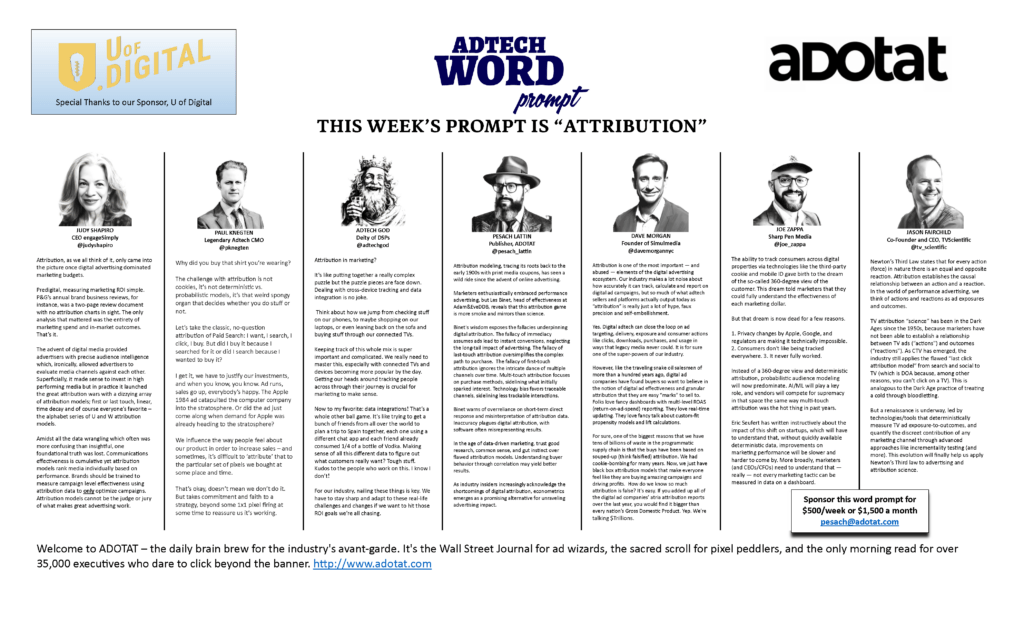As we stand on the cusp of a pristine year, it is but second nature to pivot our collective gaze towards the all-encompassing tapestry that unfurled in 2023’s advertising technology (AdTech). Picture, if you will, a grand labyrinth bathed in the resplendent glow of digital luminescence—a labyrinth where the intricate choreography of innovation, strategy, and ethical enigmas entwined in a captivating dance.
This labyrinth, with its ever-evolving pathways and concealed alcoves, serves as a profound metaphor. It embodies the very essence of 2023—a year that witnessed the unprecedented transformation of our interaction with consumer behavior.
Here, each twist and turn is a testament to the complex and multifaceted journey we embarked upon in the realm of digital advertising.
So, we take a retrospective journey through the serpentine corridors of this metaphorical maze, we do so in the company of six radiant beacons—the dominant AdTech trends that cast their luminous glow upon the landscape of 2023. These trends, spoken of and dissected in the beer halls of industry gatherings, encapsulate the year that has now found its place in the annals of digital history.
1. Connected TV (CTV): The Seer of the Living Room
2023 witnessed the remarkable rise of Connected TV (CTV) as a modern seer in the realm of digital advertising. It evolved from being just a household entertainment device to a sophisticated, data-driven platform, offering insights into viewer preferences with unprecedented precision. This transformation marked a significant shift in media consumption, blending the broad appeal of traditional television with the sharp targeting capabilities of digital technology.
The effectiveness of CTV in 2023 stemmed from its ability to leverage real-time data for precision targeting. Advertisers were captivated by the prospect of delivering content that resonated more deeply with viewers, based on a range of criteria from geographic location to viewing habits. This year also saw a surge in programmatic advertising within CTV, moving beyond direct purchases to more dynamic, customized advertising strategies.
As CTV content became more personalized, the traditional boundaries between programming and advertising began to blur. This blurring created a new landscape where ads were seamlessly integrated into the viewing experience, making them less intrusive and more relevant to the audience. The rise of CTV challenged advertisers to think creatively about how to engage viewers in a way that added value to their viewing experience, rather than interrupting it.
2. First-Party Data: The Trust Conundrum
The shift towards first-party data reliance was one of the most significant trends in 2023. Amid growing concerns over privacy and data security, first-party data emerged as a beacon of trust and transparency in the advertising world. Brands increasingly sought to build direct relationships with consumers, leveraging data shared willingly by them to tailor experiences and build loyalty.
This reliance on first-party data represented a philosophical shift in digital advertising. It moved away from the reliance on third-party data aggregators and towards a more transparent, consent-based approach. Brands that effectively utilized first-party data were able to gain deeper insights into their customers’ preferences and behaviors, enabling them to create more personalized and effective marketing strategies.
However, the increased reliance on first-party data also brought challenges. Brands needed to find innovative ways to encourage consumers to share their data willingly. This often involved creating more engaging, interactive experiences and offering tangible value in exchange for consumer data. The focus was on building a relationship with the consumer that was based on mutual benefit and respect.
3. The Renaissance of Contextual Advertising
In 2023, contextual advertising experienced a renaissance, emerging as a key trend in the AdTech space. As the digital advertising industry moved away from cookie-based targeting, the relevance of contextual advertising came to the forefront. This method, which involves placing ads in relevant content environments, offered a more organic and less intrusive way of engaging with consumers.
The resurgence of contextual advertising was driven by a growing recognition of the importance of user experience in advertising. Consumers were increasingly wary of intrusive and irrelevant ads, leading advertisers to seek more sophisticated methods of placement. Contextual advertising provided a solution that was not only more respectful of the user’s experience but also more effective in capturing their attention.
The technology powering contextual advertising also saw significant advancements in 2023. AI and machine learning algorithms became more adept at understanding content and matching ads to relevant environments. This technological evolution allowed for more nuanced and effective contextual targeting, enhancing the user experience and the effectiveness of the ads.
4.The Emergence of Retail Media Networks
Retail media networks emerged as a significant force in the digital advertising landscape of 2023. These networks, which allow advertisers to leverage first-party data from retailers, offered a unique opportunity to engage with consumers at the point of purchase. This trend represented a blurring of the lines between advertising and the retail experience, turning every digital interaction into a potential advertising opportunity.
The rise of retail media networks was driven by the increasing digitization of the retail experience. As consumers shifted more of their shopping online, retailers found themselves with a wealth of first-party data that was highly valuable to advertisers. This data allowed for highly targeted and effective advertising campaigns, making retail media networks an attractive option for brands.
Moreover, retail media networks offered a level of integration that was previously unattainable in digital advertising. Ads could be seamlessly integrated into the shopping experience, making them more relevant and less intrusive. This integration also allowed for more innovative advertising strategies, such as using AI to recommend products based on browsing history or integrating interactive elements into the ads.
5. The Integration of Artificial Intelligence
Artificial Intelligence (AI) played a pivotal role in shaping the AdTech landscape of 2023. Its integration into various aspects of digital advertising marked a significant evolution, enhancing both the efficiency and creativity of advertising strategies. AI’s ability to analyze vast amounts of data and identify patterns enabled advertisers to gain deeper insights into consumer behavior and preferences.
The use of AI in AdTech in 2023 extended beyond data analysis to content creation and ad placement. AI algorithms were increasingly used to create dynamic, personalized ad content that resonated more deeply with consumers. This level of personalization was key in capturing consumer attention in an increasingly crowded digital space.
Furthermore, AI’s role in optimizing ad placements was crucial in maximizing the effectiveness of advertising campaigns. By analyzing user behavior and engagement patterns, AI algorithms could determine the optimal time and place to display ads, thereby increasing the likelihood of consumer engagement. This optimization not only improved campaign performance but also enhanced the user experience by reducing the frequency of irrelevant or poorly timed ads.
6. The Ascendance of Digital Out-of-Home (DOOH)
Digital Out-of-Home (DOOH) advertising became one of the fastest-growing sectors in the AdTech industry in 2023. This innovative form of media, encompassing digital billboards, LED screens, and signage in high-traffic public spaces, bridged the gap between the digital and physical worlds, offering unique opportunities for contextual and engaging advertising.
The rise of programmatic DOOH was a key driver of this growth. The ability to dynamically change and target advertisements on digital outdoor screens brought a new level of flexibility and effectiveness to out-of-home advertising. This shift allowed advertisers to reach audiences in real-world settings with unprecedented precision and relevancy.
Moreover, DOOH’s growth was fueled by its ability to deliver contextually relevant content to targeted audiences at scale. The integration of real-time data, such as traffic patterns, weather conditions, and demographic information, enabled advertisers to tailor their messages to the right audience at the right time. This level of targeting was particularly effective in capturing the attention of consumers on the go, making DOOH an attractive option for brands looking to increase their reach and impact.
As we reflect on the AdTech trends of 2023, it’s clear that the year was marked by a series of transformative shifts. From the rise of CTV and first-party data to the resurgence of contextual advertising and the growth of retail media networks, each trend represented a step forward in the evolution of digital advertising. The integration of AI and the ascendance of DOOH further highlighted the industry’s ongoing innovation, pushing the boundaries of what’s possible in connecting with consumers. As we move into a new year, these trends offer valuable insights into the future direction of AdTech, shaping the ways in which brands engage with and influence consumer behavior in an increasingly digital world.






















